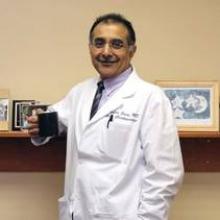It’s a central tenet of being a physician: Do all you can to help the patient. But so is "first, do no harm," and often, the harm comes from doing too much, too often. That’s the message from a growing number of physicians and organizations pushing for a sea change in how medicine is delivered, starting with the individual doctor.
In late April, many of the interested parties met in Boston to outline the problem and strategize on how to shore up evidence-based medicine and prevent knee-jerk test ordering and unnecessary treatment. "Avoiding Avoidable Care" was organized by the Lown Cardiovascular Research Foundation and the New America Foundation, and was cohosted by the Institute of Medicine.
The drivers of such avoidable or unnecessary care have been widely described: malpractice fears (so-called "defensive" medicine), and the economics of the health care system, in which volume is rewarded with greater income. But there also is "perhaps a misunderstanding of what is the ethical obligation to patients," said Dr. Vikas Saini, an organizer of the conference, codirector of the Lown Center, and president of the Lown Foundation.
Both patients and physicians tend to operate within the cultural framework that says more is better, he added. For physicians who are pressed for time, or uncertain, often "the best way forward is to order tests or pursue procedures," said Dr. Saini in an interview.
"If we start thinking differently about each of these [drivers], we’ll be going a long way towards reducing avoidable care," he said.
"We all have patients who have ideas that are completely outlandish," he said. However, most patients can be steered away from unnecessary procedures by clarifying what is appropriate and inappropriate, especially when the advice is tailored to an individual’s situation.
One strategy for the patient who demands certain tests is to talk about the potential for false positives. "Just pointing that out and reviewing the dilemma and the risk of triggering a cascade of more tests and procedures while increasing the risk of a side effect or adverse outcome [are] usually enough if the patient feels you have thought about it and given it a considered review," said Dr. Saini.
Often, the demands for tests or procedures are about seeking certainty and wanting to know that the physician cares, he said. Sometimes, it’s just about satisfying a patient’s curiosity; he or she may just "want to know."
But results can just as often lead to false knowledge. The key is to convincingly explain why conducting a test or procedure should be done only if it has the potential to change the course of care, he said.
Dr. Saini said that many patients show up at his office seeking a battery of 5 or 10 biomarker tests. The results don’t trigger recommendations for any specific therapy. "Instead, we recommend doing what they need to do anyway: eat right, exercise, and don’t smoke," he said.
To make progress in reducing unnecessary care, the physician has to be sensitive to the patient’s needs and be able to hold a conversation about what works and what doesn’t, said Dr. Saini. Patients will understand and accept what you have to say "if they feel you are on their side," he said.
This concept of shared decision making is important for another reason: It can help reduce malpractice risk. "The best protection is to be able to talk to the patient, understand their needs and concerns, and establish enough trust in the relationship" so that if something does not go according to plan, "there is not an immediate view that this is an error," said Dr. Saini.
And while physicians may interpret the Hippocratic oath to mean "do everything possible," that can actually create more harm. Clinical trials of screening tests or procedures discuss the "numbers needed to treat," but "we need to be more aware of the numbers needed to harm," he said.
Dr. Alan R. Schroeder, chief of pediatric inpatient services at Santa Clara Valley Medical Center, San Jose, Calif., said the problem is that the short-term harm from doing nothing often seems more tangible than the long-term harm. For instance, if antibiotics are withheld, the patient could get an overwhelming infection. The long-term threat of antibiotic resistance is far down the road, and not of great concern when the individual patient is being treated, said Dr. Schroeder, who has written and lectured on what he calls "safely doing less."
"Your job and your role and professional obligation is to do what is right for the patient."


